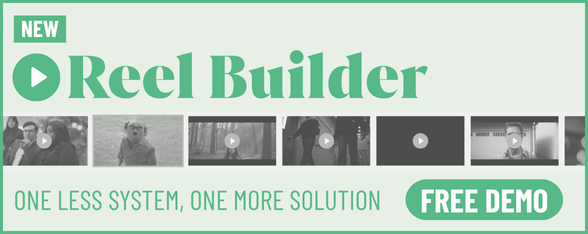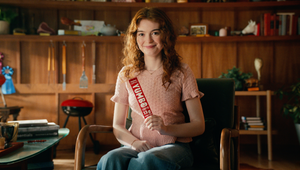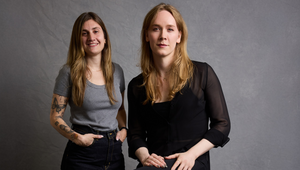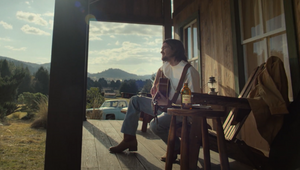
The Value of Diving in and Staying Positive with Rob Churchill

A Chicago native, Rob Churchill brings his extensive, award-winning VFX experience and formal animation training to Flavor Design. With over three decades in the VFX industry, including award wins at Cannes, The Emmys, AICP, and the Clio Awards, Rob is known for his infectious enthusiasm, technical expertise, and creative energy. He thrives on the challenge of pushing boundaries and consistently delivers exceptional results.
Throughout his storied career, Rob has collaborated with renowned directors such as Spike Lee, Joe Chappelle, Peter Berg, David McNally, Joe Pytka, Rodrigo Garcia Saiz, Craig Gillespie, Bryan Buckley, and Stacy Wall, contributing his vision and skill to iconic projects across film, TV, and commercials.
Rob’s expertise spans a broad spectrum of VFX disciplines—from motion control and 3D animation to compositing and simulation. A true pioneer in real-time effects, he’s well-versed in cutting-edge tools like Flame, Maya, Nuke, Houdini, and Unreal Engine. Whether he's creating intricate simulations or diving into complex VFX challenges, Rob brings both technical mastery and boundless creativity to every project.
LBB> What’s the biggest misconception people have about VFX?
Rob> That it’s all just “fix it in post.” There’s this idea that VFX is a magical band-aid or a one-click solution, when in reality, it’s an incredibly detailed, collaborative, and “planned” process that starts well before the shoot. We’re often crafting things that people won’t even realise are visual effects—that’s when we’ve really done our job right.
LBB> There are two ends to the VFX spectrum—the invisible post and the big, glossy 'VFX-heavy' shots. What are the challenges that come with each?
Rob> Both are rewarding in their own way. Invisible VFX is all about subtlety—helping the viewer stay immersed without ever noticing the work. Glossy shots are a blast because you get to push the visuals and have fun with scale and energy. I love switching between both. It keeps you sharp and keeps the creativity flowing.
LBB> As a VFX artist, what should directors be aware of to make sure you do the best possible job for them?
Rob> Talk to us early. If you loop us in after the shoot, we’re often playing catch-up with footage that doesn’t set us up for success—wrong lens, no tracking markers, weird lighting. But if you bring us in during prep, we can flag issues, offer alternatives, and design things smarter from the jump. Also: trust us. We want your project to look amazing, too.
LBB> VFX is a true craft in the classic sense of the word. Where did you learn your craft?
Rob> I kind of grew up with VFX. Back in the ’90s, I was working with insanely talented artists, building physical models and shooting with motion control rigs. That era taught me the fundamentals—real-world light, physics, camera moves—the stuff you “feel” in a shot even when it’s 100% CG.
As the tech shifted, I just kept moving with it. I’m still using Flame, Maya, Nuke, Creative Suite, 3D tools, Unreal Engine and now Houdini's in the mix too. None of them ever really became obsolete—they just evolved, and I adapted right along with them. Even motion control is still part of my world. I’ve worked with the BOLT system recently, and it’s amazing how those techniques have come full circle. The tools keep changing, but the eye stays the same.
LBB> Think about the very, very start of a project. What is your process for that? Do you have a similar starting point for all projects?
Rob> The first thing I do is “listen”—to the client, the director, the DP. What’s the story they’re trying to tell? From there, I break down the shots technically: what’s practical, what’s digital, what’s a hybrid. And then I gather references—tonally, visually, even rhythmically. That reference wall is always my compass.
LBB> We imagine that one of the trickiest things with VFX is, time issues aside, deciding when a project is finished! How do you navigate that?
Rob> You develop a sense over time. There’s a point where further changes don’t improve the shot, they just shift it sideways. I think the trick is knowing the goal of each shot—what’s the emotion or story beat? Once it’s hitting that and holds up under scrutiny, that’s the finish line. The challenge is resisting the urge to tinker endlessly.
LBB> Is there a piece of technology or software that's particularly exciting you in VFX? Why?
Rob> Oh yeah—Houdini is my happy place. I eat, sleep, and dream Houdini because it just unlocks so much possibility. Whether it’s building complex systems, crafting beautiful simulations, or designing entire worlds from scratch, it’s endlessly inspiring. Pair that with Nuke, and you’ve got a match made in software heaven. I love how those two work together—Nuke for the precision and finesse, Houdini for the procedural magic. On top of that, AI has been a fantastic boost on the cleanup side—roto, especially. It speeds up the boring stuff so we can spend more time creating. And Unreal Engine is making real-time VFX faster, smarter, and more collaborative. The whole toolbox right now is just firing on all cylinders.
LBB> How do you think real-time tech and game engines will shape VFX and the production pipeline?
Rob> We’re already seeing it—virtual production is letting teams make visual choices in the moment instead of waiting for post. That’s empowering for directors and DPs. It shifts a lot of VFX “post” work into the front of the schedule. It’s also forcing us to think more like live theater—what can be achieved practically, and what can be layered digitally right there on set.
LBB> VFX is a craft that relies on you really looking at nature—how light works, how gravity works, how creatures move, how crowds behave, how explosions unfold. So how do you like to approach the research side of your job? What’s the most random or intriguing thing you’ve learned from working on a project?
Rob> I absolutely love this part of the job. There’s something really meditative and fun about observing how the real world works—then figuring out how to recreate or stylise it. One project that stands out was for Pepsi: I built a procedural water droplet system in Houdini where the drops didn’t just run down the can—they interacted, merged, and picked up other droplets along the way. I coded it in VEX, and it was a blast. Super subtle detail, but it made the surface feel alive and authentic.
Another one I loved was in Houdini again, simulating ocean waves crashing on the rocky California coastline—white water, splash trails, all of it. It’s amazing how complex something like that is when you really study it, and also how satisfying it is when you get it to “feel” right. You have to watch a ton of references, break it down, and then build it back up procedurally. We've come a long way from backlot water tanks!
LBB> When you’re watching a VFX-heavy ad or film, what do you look for to gauge how good the work is?
Rob> Lighting and integration. You can tell instantly if something’s floating or if the shadows aren’t grounded. Also, motion—if the weight’s off, the illusion collapses. But it’s not just about realism. A well-crafted VFX shot feels “intentional.” It fits the tone. It’s not about “can I spot the CG,” it’s “does this feel like it ‘belongs’ in this world?”
LBB> How did you first get into the industry? What was your very first job in the industry and what were the biggest lessons that you learned at that time?
Rob> My first job in the industry was as an intern at a production company that had just gotten its very first editing system. I had studied editing and post in college, so I jumped right in and started cutting while the team was out shooting. I loved it. I was so energised by the work, and that enthusiasm really connected with clients. Before long, I was handling all their post work and growing it into a full division. Eventually, they made me a partner, which was an incredible opportunity early in my career.
That experience set the tone for everything that followed. I learned the value of diving in, staying positive, and always being ready to learn. I’ve always been the type who runs toward a challenge, and that start gave me the foundation to grow and keep evolving with the craft.
LBB> What was your first big creative milestone—something you were really proud of?
Rob> One of my biggest milestones, early in my career, was when I moved into a new company and started working with their biggest client. After just one session, I quickly became their go-to person—booked every single day, three months in advance. That went on for about six years before I moved on to new challenges. It was a moment that really reinforced how the energy and creativity I bring to the work can truly make an impression.
LBB> From a VFX perspective, which ads have you seen recently that you've been particularly fond of and why?
Rob> Cutters Studios and its companies, which include Flavor, work on dozens of ads every week, so it's hard to pick just one favourite. But if I had to choose, anything I can dive deep into with Houdini really stands out. I love the challenge and creativity that comes with working on complex VFX simulations, and Houdini’s capabilities make those kinds of projects especially exciting for me.















